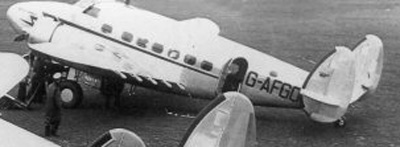Zone
Crash of a Vickers 952 Vanguard in Hochwald: 108 killed
Date & Time:
Apr 10, 1973 at 1013 LT
Registration:
G-AXOP
Survivors:
Yes
Schedule:
Bristol - Basel
MSN:
745
YOM:
1962
Flight number:
IM435
Crew on board:
6
Crew fatalities:
Pax on board:
139
Pax fatalities:
Other fatalities:
Total fatalities:
108
Captain / Total hours on type:
1088.00
Copilot / Total hours on type:
1256
Aircraft flight hours:
16367
Circumstances:
The Invicta International Airlines Vickers Vanguard was operating on a charter flight from Bristol (BRS) to Basel-Mulhouse (BSL). After entering the Basel Mulhouse terminal area, the flight was cleared to continue to the BN NDB. Weather was poor at that time: cloud base at 120 m (390 feet) and a reported runway visual range of 700 (2,300 feet) and 1,300 m (4,250 feet). On arrival at the BN beacon the crew were cleared to descend to 2,500 feet and were asked to report over the MN beacon before making a 90° left hand turn to finals for runway 16. At 09:56 the crew reported at 2,500 feet, followed by a position report of the MN beacon at 09:57:40. When on finals over the BN beacon, the crew reported turning outbound and said they would report at the MN beacon again for another approach. When the crew reported overhead the BN beacon again, the plane was in fact overhead the airfield, flying parallel to the ILS localizer beam. After 1,5 minute the aircraft began to overshoot, correctly making an initial turn to the west. The crew, now flying well south of the field, were instructed to report back over the MN beacon. When reporting over the MN beacon again, before it would have to turn left for finals, the plane was in fact overhead the BS beacon, a beacon located to the south of runway 16. At 10:11:25 the crew reported over the BN beacon on finals and was cleared to land. In fact the plane was now flying 3 miles South of the field and 1 mile west of the extended centerline. Two miles further on Basle ATC asked the crew "Are you sure you are over the BN?". The captain replied "I think I've got a spurious indication. We are on the LO... on the ILS now, sir". Half a minute later the captain radioed "BN is established on localizer and glide path; the ADF's all over the place in this weather." Last radio contact was when the captain reported at 1,400 feet, to which ATC replied that the flight was probably to the south of the airport. At 10:13 the plane brushed against a wooded range of hills and crashed 15 km southeast from the airport. The aircraft disintegrated, except for the tail section, where most of the survivors were found. Two stewardess and 35 passengers survived while 108 other occupants were killed.
Probable cause:
A loss of orientation during two ILS approaches carried out under instrument flight conditions. The following factors contributed to the occurrence of the accident:
- Inadequate navigation, above all imprecise initiation of final approach as regards height and approach centerline,
- Confusion of aids,
- Insufficient checking and comparison of navigational aids and instrument readings (cross and double checks).
The poor reception of ht medium wave beacons and technical defects in LOC receiver No.1 and glide slope receiver no.2 made the crew’s navigational work more difficult.
- Inadequate navigation, above all imprecise initiation of final approach as regards height and approach centerline,
- Confusion of aids,
- Insufficient checking and comparison of navigational aids and instrument readings (cross and double checks).
The poor reception of ht medium wave beacons and technical defects in LOC receiver No.1 and glide slope receiver no.2 made the crew’s navigational work more difficult.
Final Report:
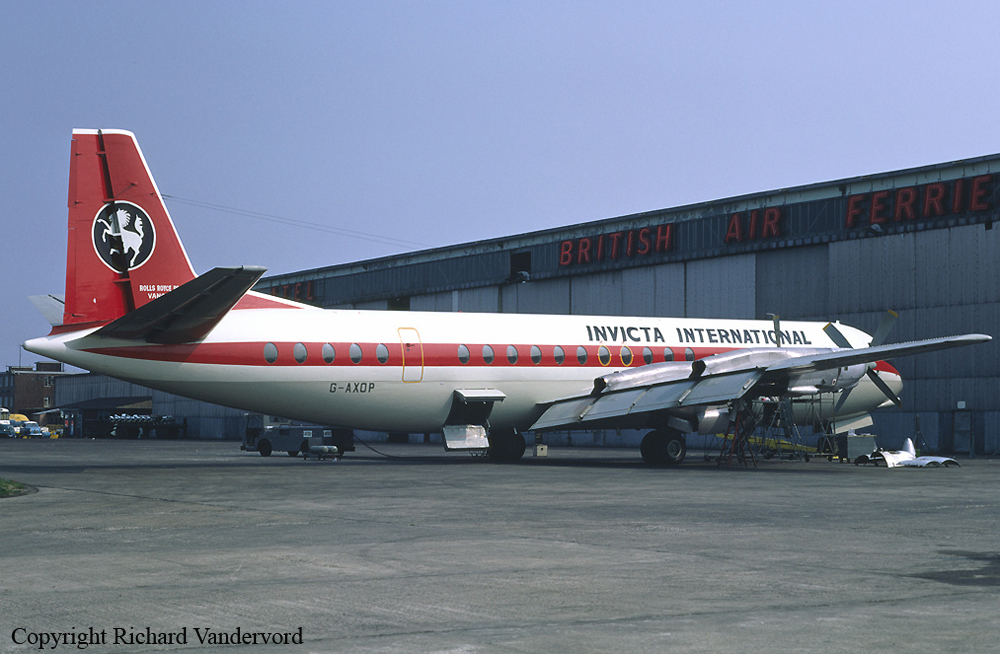
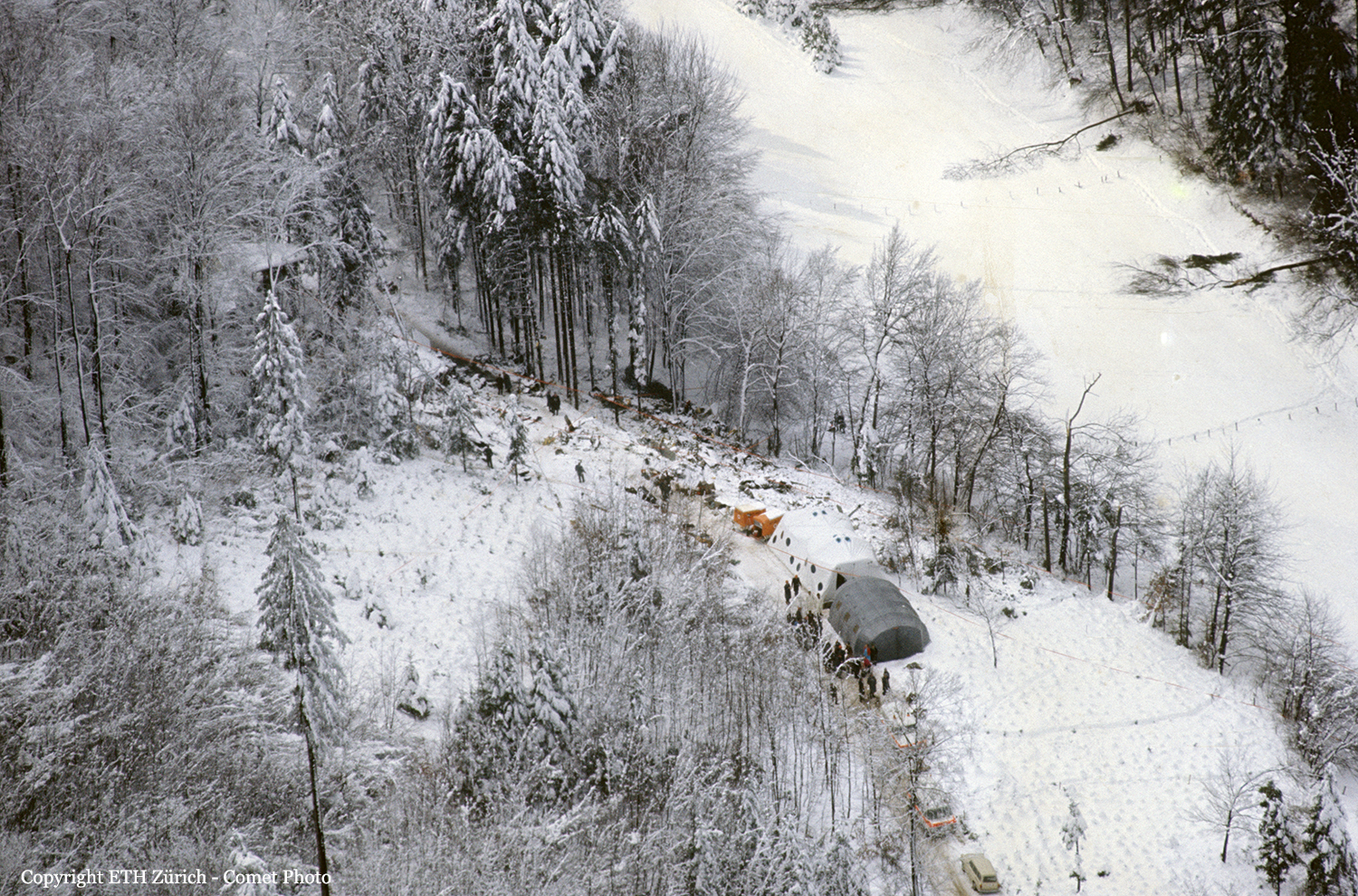
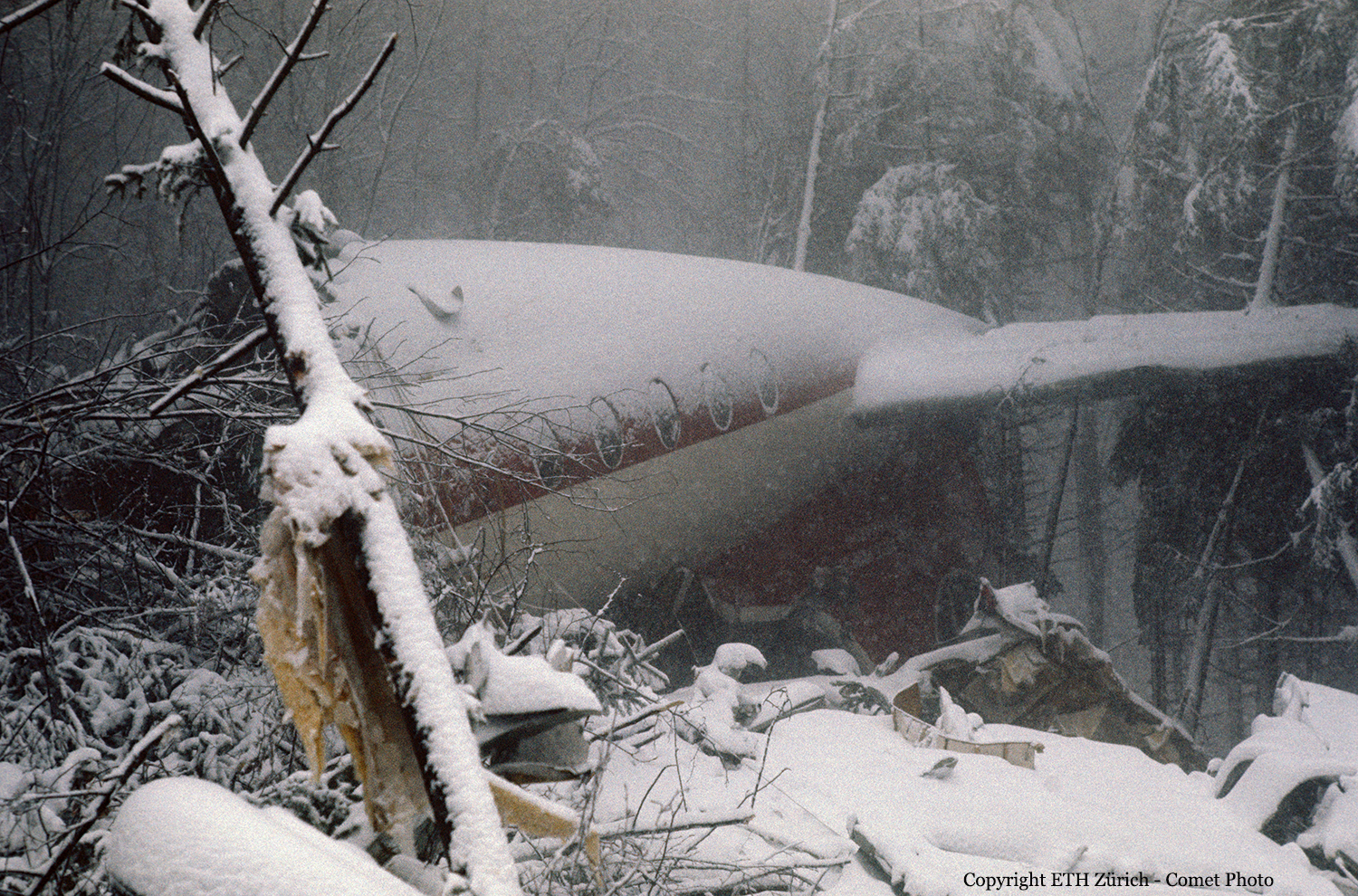
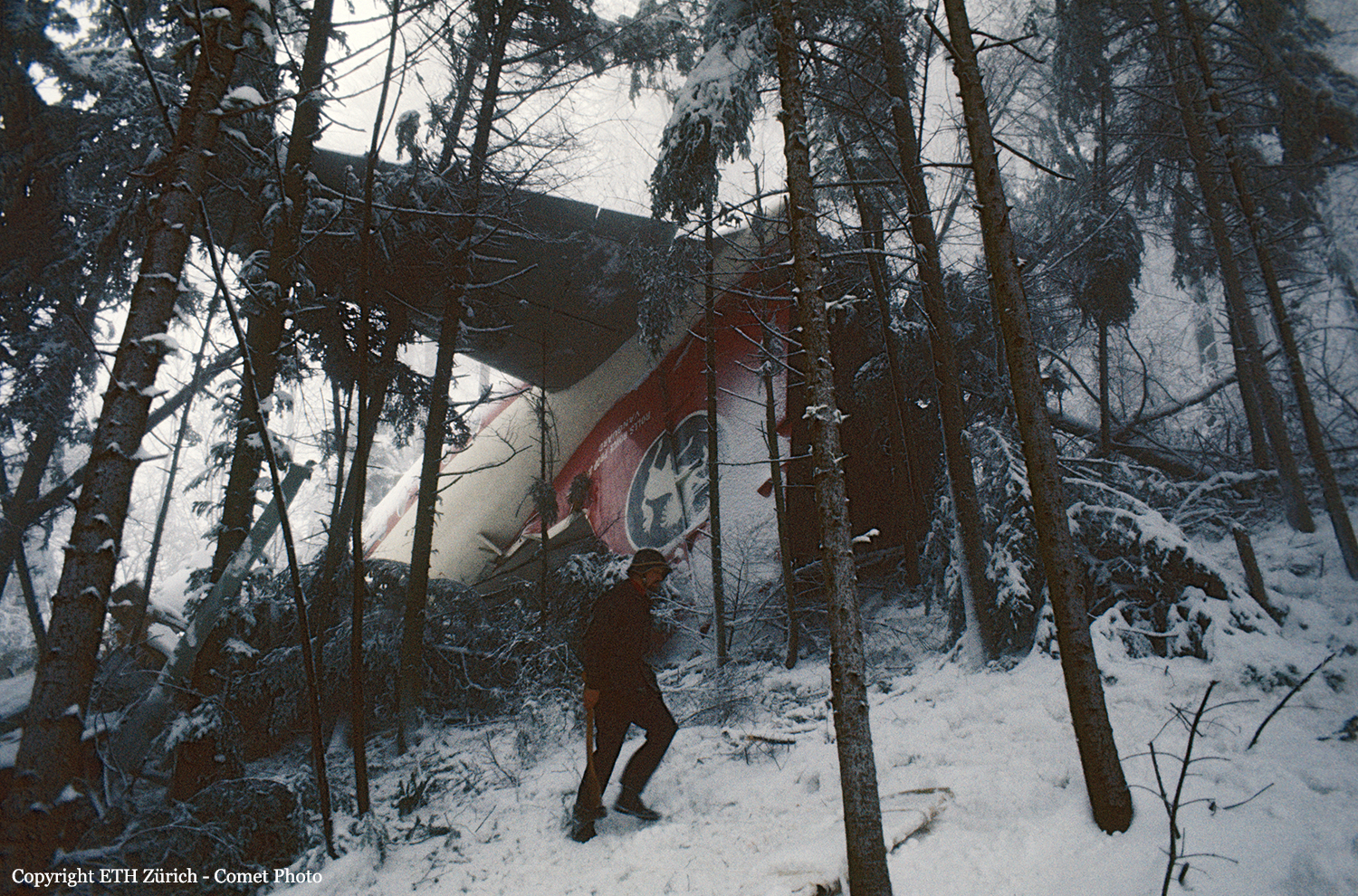
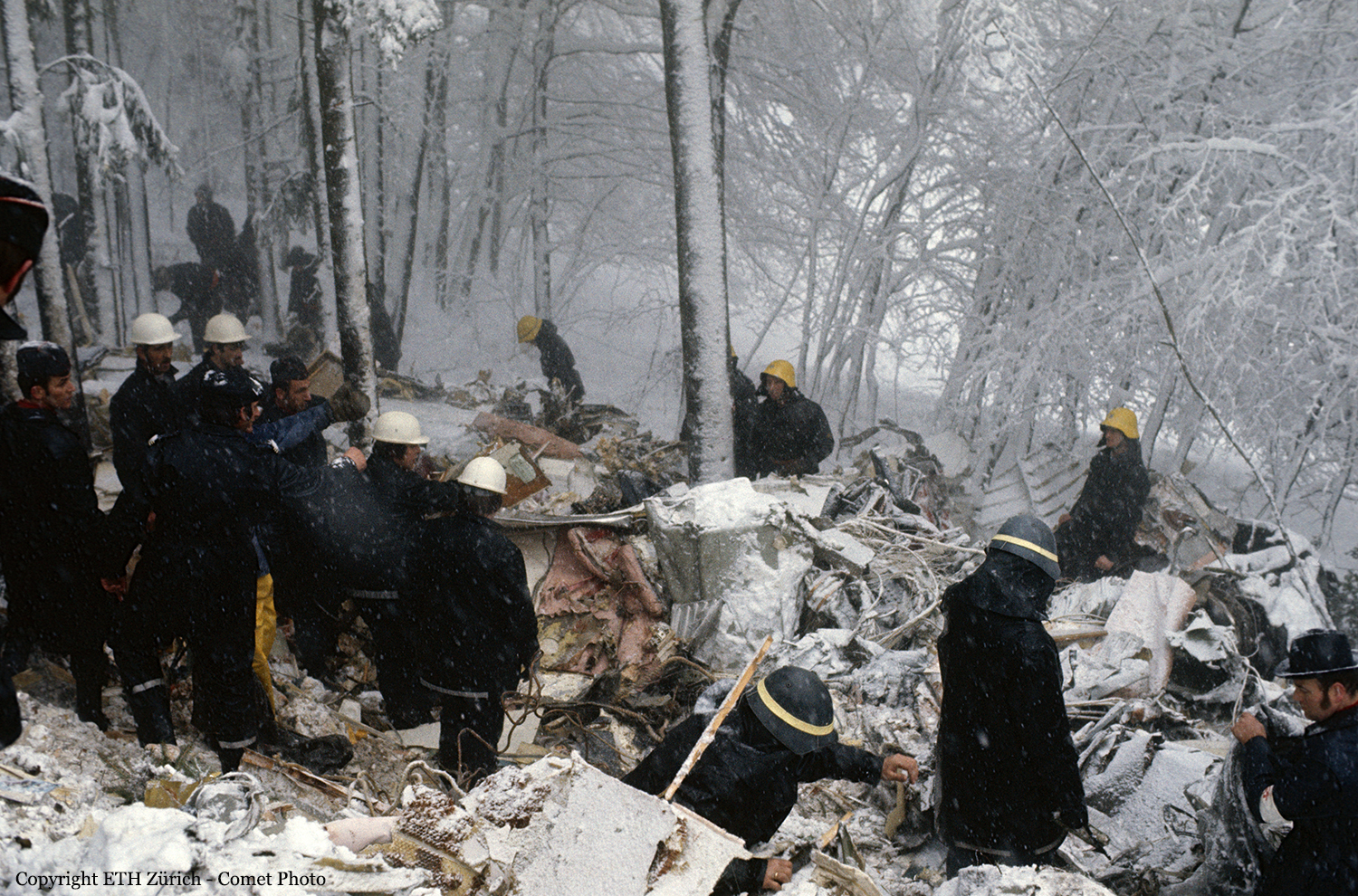
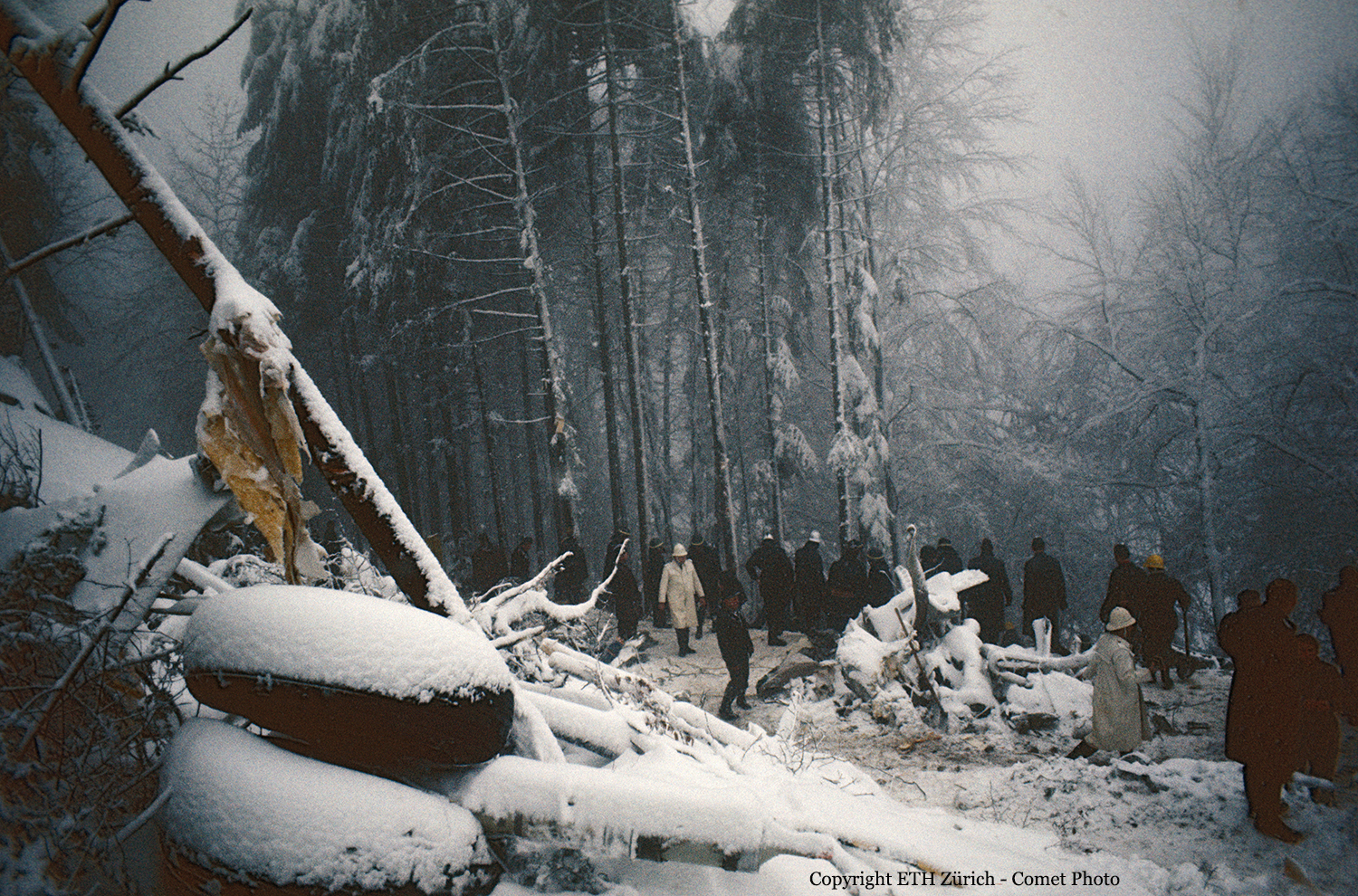
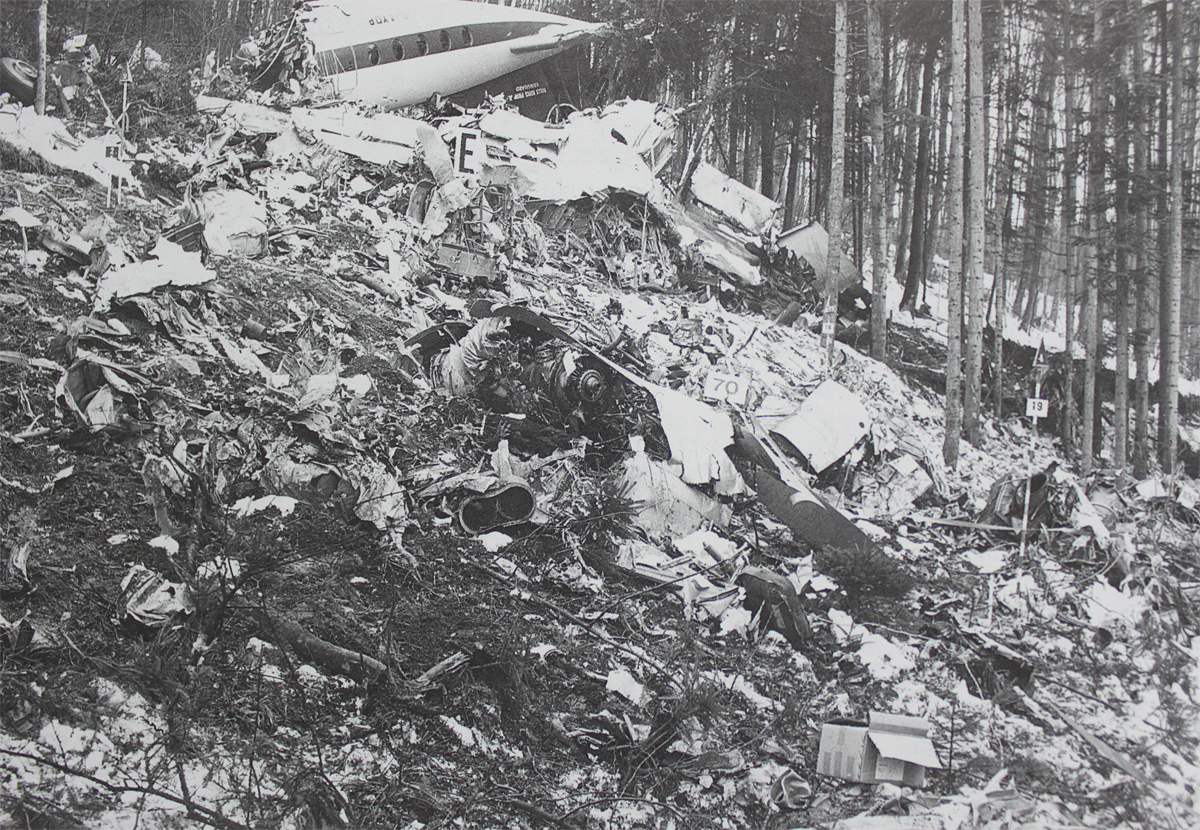
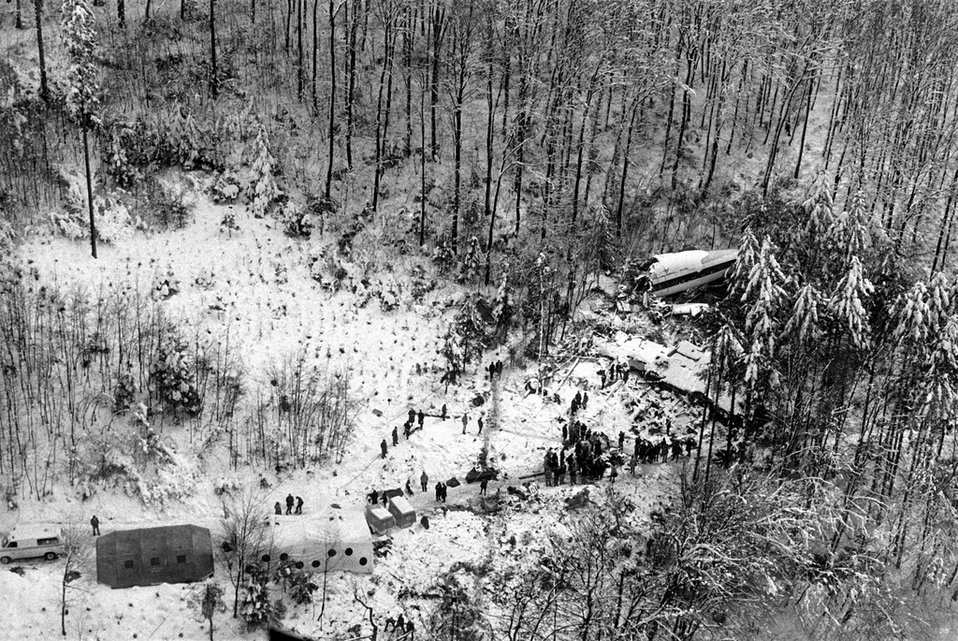
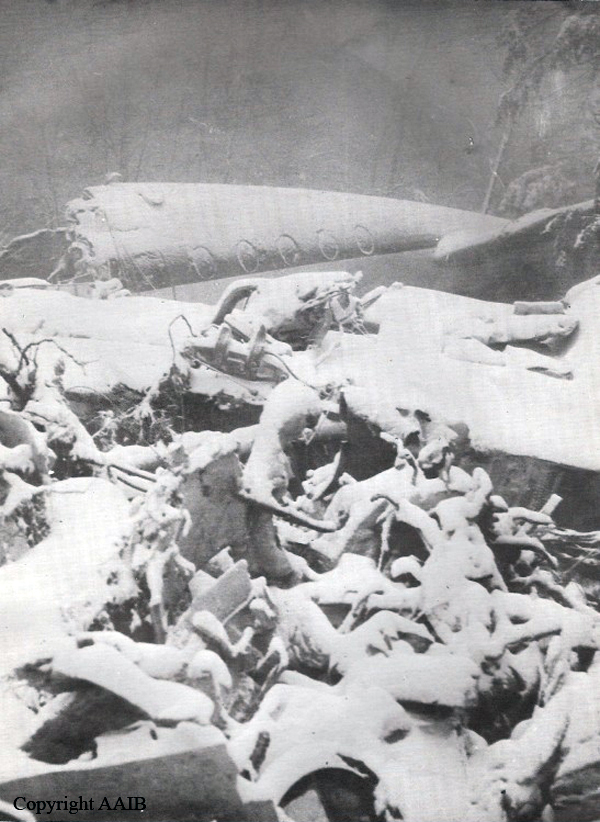
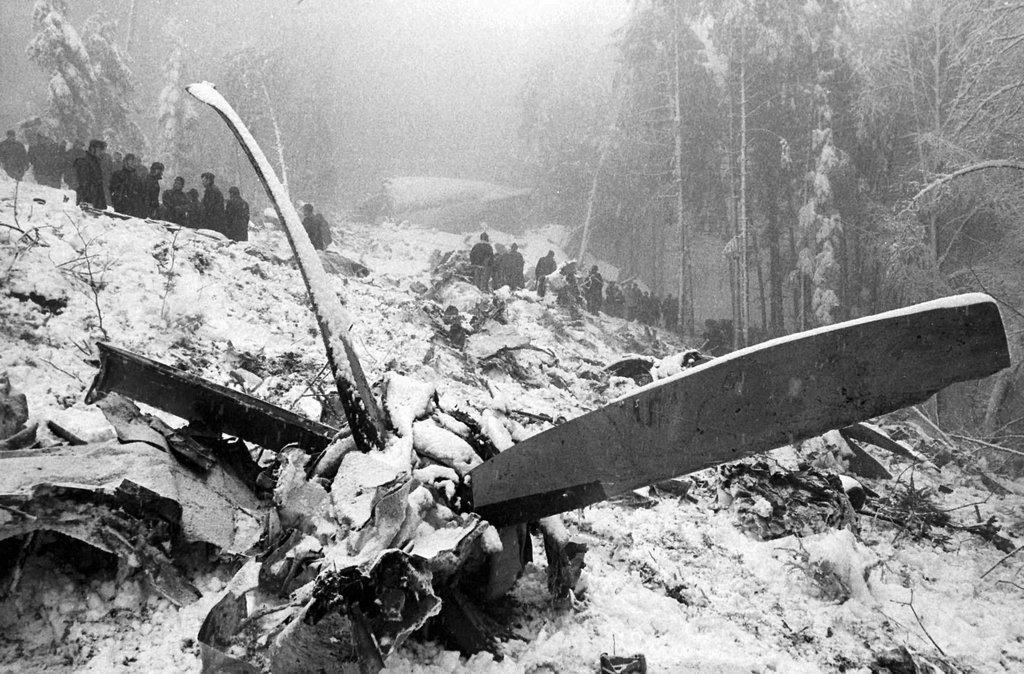
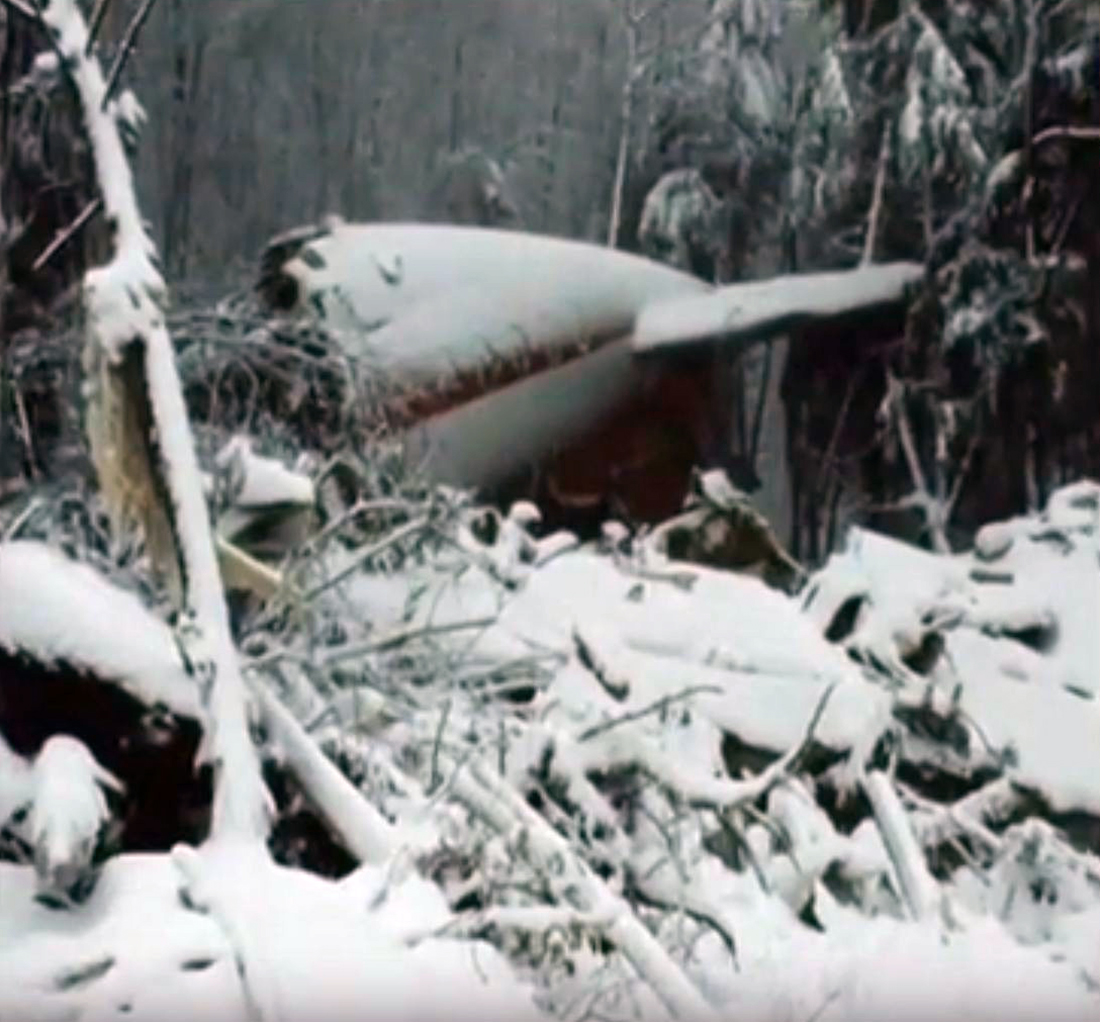
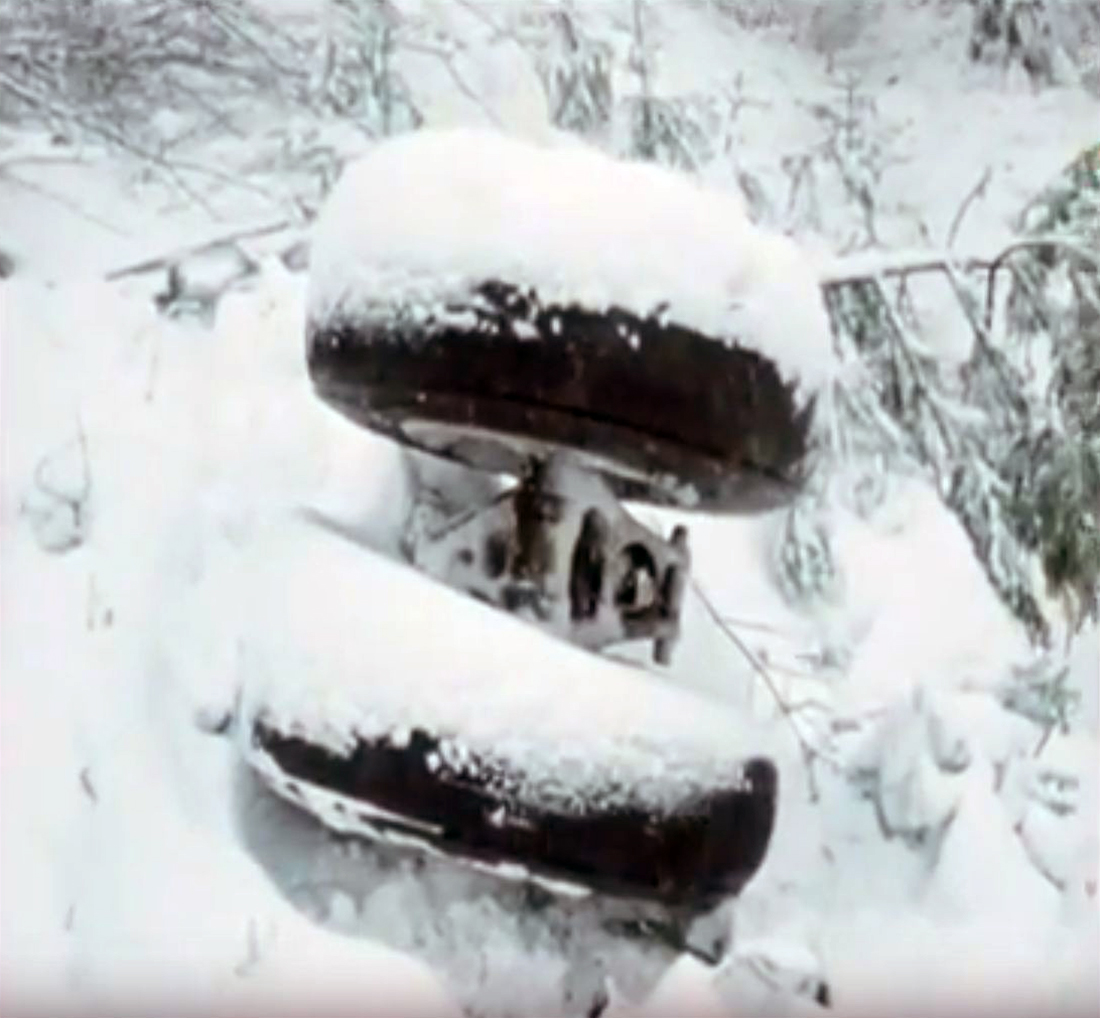
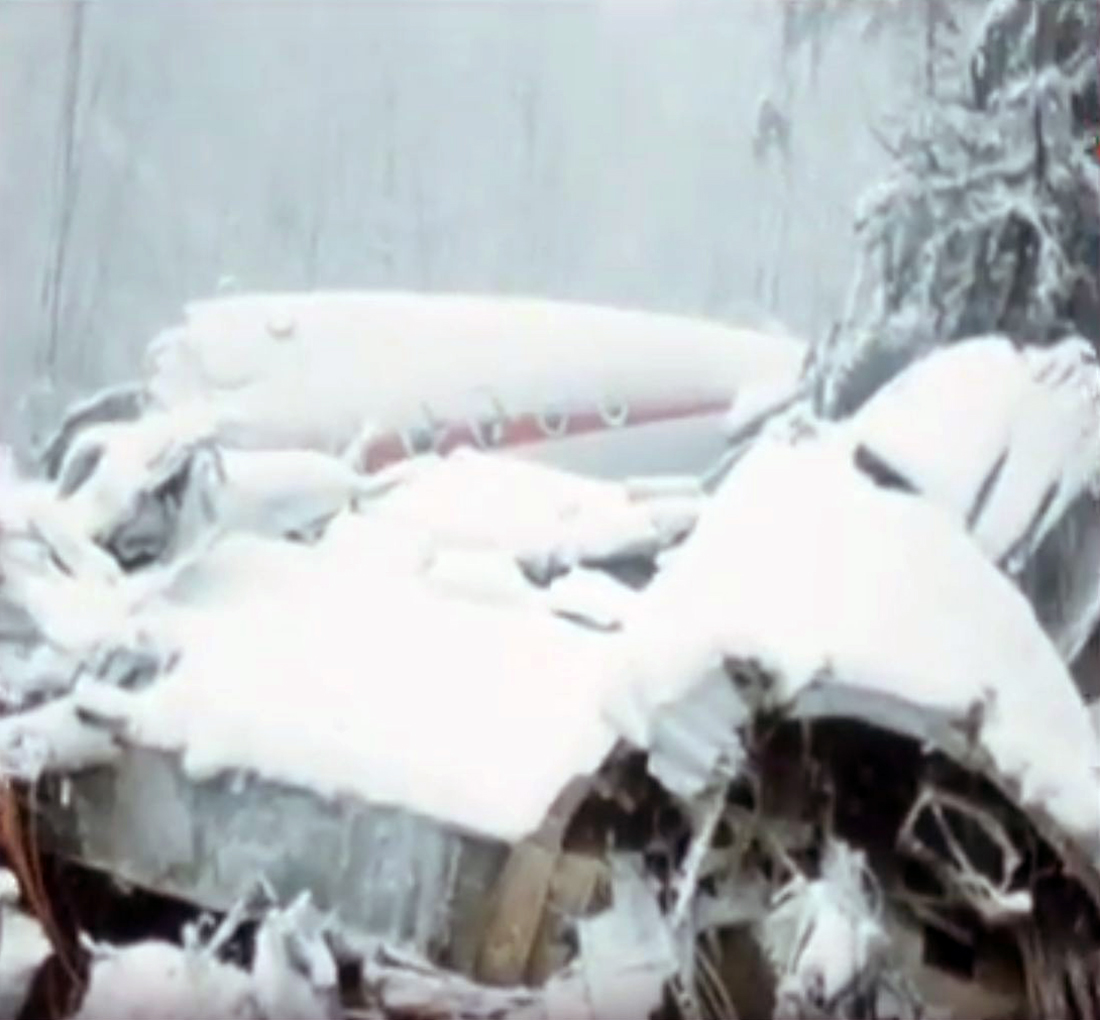
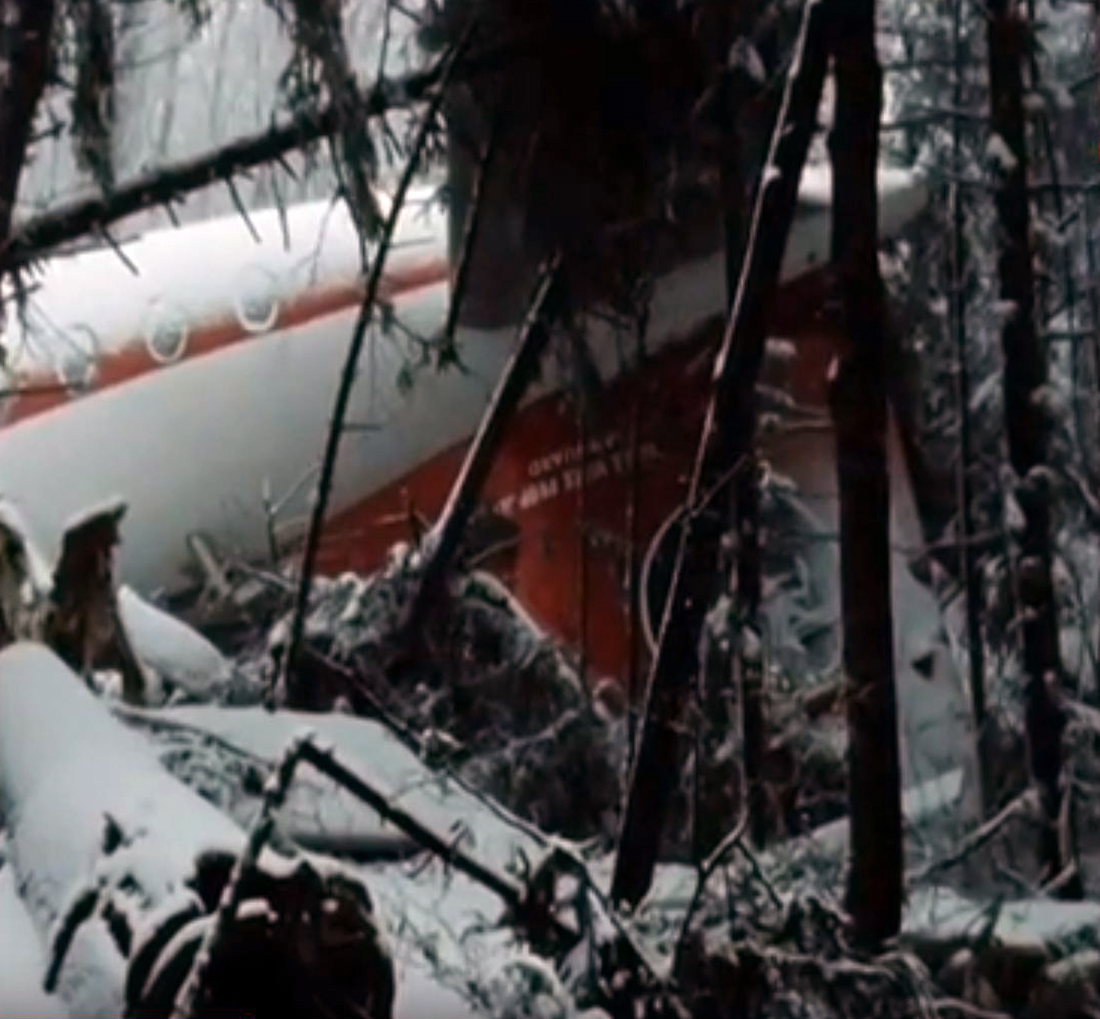
Crash of a Rockwell Aero Commander 520 near Burnsville: 2 killed
Date & Time:
May 9, 1972 at 1030 LT
Registration:
N9051R
Survivors:
No
Schedule:
Augusta - Bristol
MSN:
520-22
YOM:
1952
Crew on board:
1
Crew fatalities:
Pax on board:
1
Pax fatalities:
Other fatalities:
Total fatalities:
2
Captain / Total hours on type:
27.00
Circumstances:
While cruising in level altitude in poor weather conditions, the twin engine airplane struck a mountain and crashed in flames near Burnsville, North Carolina. The wreckage was found two days later near the mountain top and both occupants have been killed.
Probable cause:
The pilot continued under VFR mode in adverse weather conditions. The following factors were reported:
- Low ceiling,
- Visibility down to zero,
- Clouds obscured site.
- Low ceiling,
- Visibility down to zero,
- Clouds obscured site.
Final Report:
Crash of a De Havilland DH.104 Dove 2B in Old
Date & Time:
Jan 20, 1965
Registration:
G-AKJG
Survivors:
Yes
Schedule:
Sywell – Bristol
MSN:
04071
YOM:
1947
Crew on board:
1
Crew fatalities:
Pax on board:
0
Pax fatalities:
Other fatalities:
Total fatalities:
0
Circumstances:
The pilot was in charge to deliver the aircraft from Sywell to Bristol. En route, one of the engine caught fire and the pilot reduced his altitude in an attempt to make an emergency landing. The aircraft crash landed in a field and came to rest. While the pilot was uninjured, the aircraft was damaged beyond repair.
Probable cause:
Engine fire in flight.
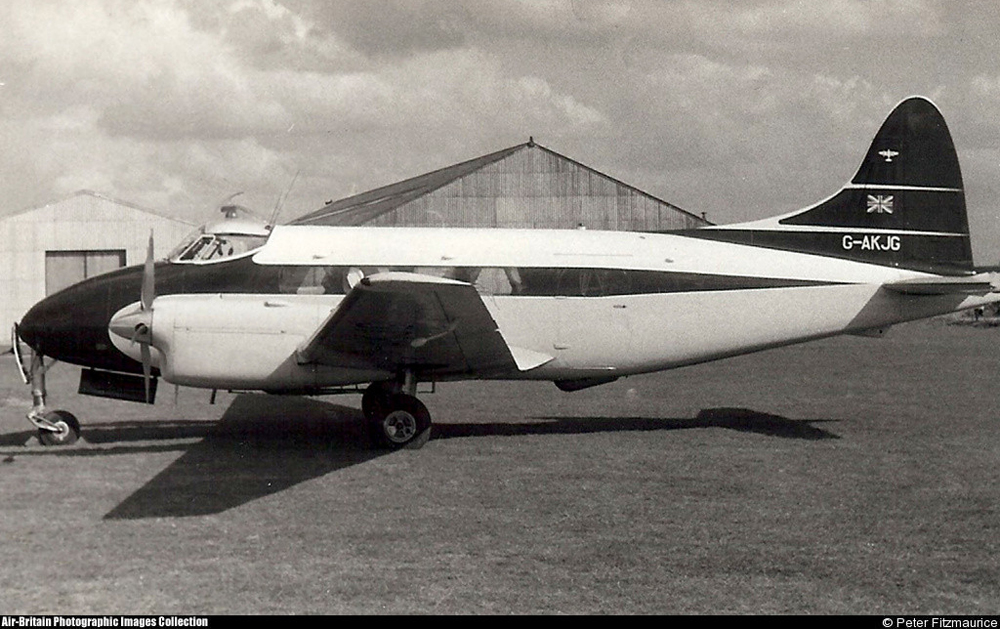
Crash of a Douglas C-47A-20-DK near Port Logan: 22 killed
Date & Time:
Jul 27, 1944 at 1600 LT
Registration:
42-93038
Survivors:
No
Schedule:
Bristol – Prestwick – Keflavik – Godthab – Gander – Boston – New York
MSN:
12905
YOM:
1944
Crew on board:
5
Crew fatalities:
Pax on board:
17
Pax fatalities:
Other fatalities:
Total fatalities:
22
Circumstances:
While cruising at low height in marginal weather conditions over the Irish Sea, the aircraft hit the Mull of Galloway (400 feet high) located south of Port Logan, Wigtownshire. The aircraft hit the mountain six feet from its summit and was totally destroyed. All 22 occupants were killed, among them two medical staff and US soldiers wounded in Normandy and flying back to the US.
Crew:
1st Lt Galen R. Hendricks, pilot,
2nd Lt Raymond Hutchings, copilot,
F/O Dan Willard Meshew, pilot,
2nd Lt Leon Julius Tully, navigator,
Sgt Jay V. Alcorn, radio operator,
S/Sgt Merl William Skinner, crew chief.
Passengers:
2nd Lt Mary Edith Jackley,
John Henry Salmi,
Maj Irving I. Shure,
2nd Lt John Wilbur Ingram,
2nd Lt Theron S. Ward,
Sgt Ernest Howard Corvin,
Sgt Billy G. Morris,
Cpl Elmer F. Lauf,
James D. Green,
Keith Glenn Lowdermilk,
Marcus Saspochnikoff,
James E. W. Ayers,
Edmund Leroy Davis,
Donald R. Hammerstrom,
Jack F. Sheidler,
LAC Samuel Gilmour.
Source:
http://www.peakdistrictaircrashes.co.uk/pages/scotland/Douglas-C-47A-42-93038-Cairngarroch-Bay.htm
Crew:
1st Lt Galen R. Hendricks, pilot,
2nd Lt Raymond Hutchings, copilot,
F/O Dan Willard Meshew, pilot,
2nd Lt Leon Julius Tully, navigator,
Sgt Jay V. Alcorn, radio operator,
S/Sgt Merl William Skinner, crew chief.
Passengers:
2nd Lt Mary Edith Jackley,
John Henry Salmi,
Maj Irving I. Shure,
2nd Lt John Wilbur Ingram,
2nd Lt Theron S. Ward,
Sgt Ernest Howard Corvin,
Sgt Billy G. Morris,
Cpl Elmer F. Lauf,
James D. Green,
Keith Glenn Lowdermilk,
Marcus Saspochnikoff,
James E. W. Ayers,
Edmund Leroy Davis,
Donald R. Hammerstrom,
Jack F. Sheidler,
LAC Samuel Gilmour.
Source:
http://www.peakdistrictaircrashes.co.uk/pages/scotland/Douglas-C-47A-42-93038-Cairngarroch-Bay.htm
Crash of a De Havilland DH.91 Albatross in Shannon
Date & Time:
Jul 6, 1943
Registration:
G-AFDK
Survivors:
Yes
Schedule:
Bristol – Shannon
MSN:
6804
YOM:
1938
Crew on board:
5
Crew fatalities:
Pax on board:
9
Pax fatalities:
Other fatalities:
Total fatalities:
0
Circumstances:
On touchdown at Shannon-Rinneanna Airport, the aircraft went out of control, veered off runway and came to rest. While all 14 occupants escaped uninjured, the aircraft was damaged beyond repair.
Crew:
Geoffrey Palliser Moss, pilot,
D. M. Revell, radio operator,
C. Caseley, flight engineer,
R. Gilmour,
A. H. Wigmore.
Passengers:
Neil Richardson,
Simon Marks,
Pauline Gower,
Gerard d'Erlanger,
John Marchbank,
David Smillie Smith MacDowall,
Grahame Temple Meller,
Keith Granville,
Piers John Barnes Wimbush.
Crew:
Geoffrey Palliser Moss, pilot,
D. M. Revell, radio operator,
C. Caseley, flight engineer,
R. Gilmour,
A. H. Wigmore.
Passengers:
Neil Richardson,
Simon Marks,
Pauline Gower,
Gerard d'Erlanger,
John Marchbank,
David Smillie Smith MacDowall,
Grahame Temple Meller,
Keith Granville,
Piers John Barnes Wimbush.

Crash of a Douglas DC-3-194 into the Bay of Biscay: 17 killed
Date & Time:
Jun 1, 1943 at 1254 LT
Registration:
G-AGBB
Survivors:
No
Schedule:
Lisbon – Bristol
MSN:
1590
YOM:
1936
Flight number:
2L777
Crew on board:
4
Crew fatalities:
Pax on board:
13
Pax fatalities:
Other fatalities:
Total fatalities:
17
Circumstances:
The aircraft left Lisbon-Portela de Sacavém at 0730LT on a regular schedule flight to Bristol-Whitchurch Airport. While cruising over the Bay of Biscay, the aircraft was intercepted and shot down by eight German Junkers JU.88 fighters. The civil aircraft went out of control and crashed into the sea some 350 km north of La Coruna. All 17 occupants, among them the British actor Leslie Howard, were killed.
Crew:
Cpt Quirinus Tepas Obe, pilot,
Cpt Dirk de Koning, pilot,
Cornelis van Brugge, radio operator,
Engbertus Rosevink, flight engineer.
Passengers:
Leslie Howard,
Alfred T. Chenhalls,
Kenneth Stonehouse,
Evelyn Peggy Margetts Stonehouse,
Rotha Hutcheon
Petra Hutcheon,
Carolina Hutcheon,
Cecelia Emilia Falla Paton,
Tyrrell Mildmay Shervington,
Ivan James Sharp,
Wilfrid Israel,
Francis German Cowlrick,
Gordon Thompson MacLean.
Crew:
Cpt Quirinus Tepas Obe, pilot,
Cpt Dirk de Koning, pilot,
Cornelis van Brugge, radio operator,
Engbertus Rosevink, flight engineer.
Passengers:
Leslie Howard,
Alfred T. Chenhalls,
Kenneth Stonehouse,
Evelyn Peggy Margetts Stonehouse,
Rotha Hutcheon
Petra Hutcheon,
Carolina Hutcheon,
Cecelia Emilia Falla Paton,
Tyrrell Mildmay Shervington,
Ivan James Sharp,
Wilfrid Israel,
Francis German Cowlrick,
Gordon Thompson MacLean.
Probable cause:
Shot down by German fighters. Theories abound that the aircraft, a Douglas DC-3, was attacked because the Germans believed that British Prime Minister Winston Churchill was aboard. Other theories suggest the DC-3 was targeted because several passengers, including Howard, were British spies. During the Second World War, British and German civilian aircraft operated out of the same facilities at Portela and the incoming and outgoing traffic was watched by Allied and Axis spies. The Lisbon - Bristol route frequently carried agents and escaped PoWs to Britain.
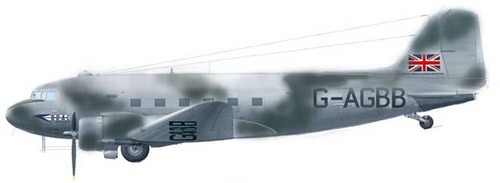
Crash of a De Havilland DH.91 Albatross in Reykjavik
Date & Time:
Aug 11, 1941 at 2017 LT
Registration:
AX903
Survivors:
Yes
Schedule:
Bristol – Reykjavik
MSN:
6800
YOM:
1938
Crew on board:
5
Crew fatalities:
Pax on board:
0
Pax fatalities:
Other fatalities:
Total fatalities:
0
Circumstances:
The airplane named 'Faraday' departed Bristol-Filton Airport on a mail flight to Reykjavik, carrying five crew members and the military mail. After touchdown, one of the undercarriage collapsed. The airplane veered off runway and collided with a parked Fairey Battle registered L5547. The Albatross was damaged beyond repair and all five crew members escaped uninjured.
Probable cause:
Undercarriage collapsed after landing.
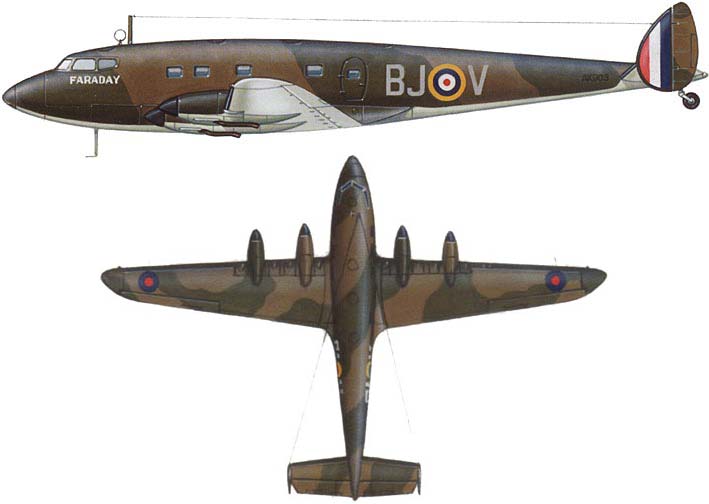
Crash of a Vickers 416 Wellington IC in Bristol: 3 killed
Date & Time:
Apr 30, 1941 at 2150 LT
Registration:
T2905
Survivors:
Yes
Schedule:
Bassingbourn - Bassingbourn
Crew on board:
6
Crew fatalities:
Pax on board:
0
Pax fatalities:
Other fatalities:
Total fatalities:
3
Circumstances:
The crew was engaged in a training exercise out from RAF Bassingbourn. In the evening, while flying over the city of Bristol, the airplane collided with a barrage balloon cable and crashed in the St Andrews Park, bursting into flames. Three crew members were injured and three others were killed.
Crew:
P/O Kenneth Guy Evans, pilot, †
Sgt Charles John Clarke, wireless operator, †
Sgt Thomas Leonard Lever, wireless operator, †
Sgt L. H. Houghton,
Sgt J. S. Jones,
Sgt R. Wish.
Crew:
P/O Kenneth Guy Evans, pilot, †
Sgt Charles John Clarke, wireless operator, †
Sgt Thomas Leonard Lever, wireless operator, †
Sgt L. H. Houghton,
Sgt J. S. Jones,
Sgt R. Wish.
Probable cause:
Collision with a barrage balloon cable.
Crash of a Lockheed 14-WF62 Super Electra in Walton Bay: 2 killed
Date & Time:
Nov 22, 1938
Registration:
G-AFGO
Survivors:
No
Schedule:
Bristol - Bristol
MSN:
1468
YOM:
1938
Crew on board:
2
Crew fatalities:
Pax on board:
0
Pax fatalities:
Other fatalities:
Total fatalities:
2
Circumstances:
The was engaged in a control (test) flight out from the Bristol-Whitchurch Airport. While flying over the region of Walton Bay, along the Severn, the twin engine aircraft went out of control and crashed in an open field. Both crew members were killed.
